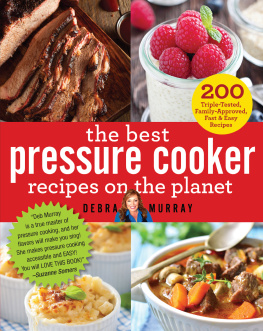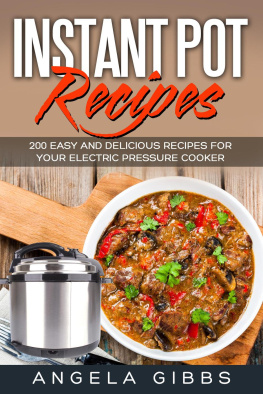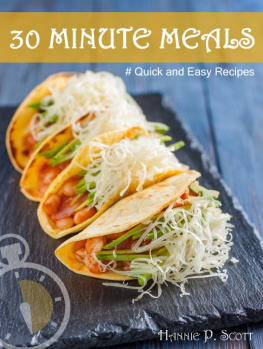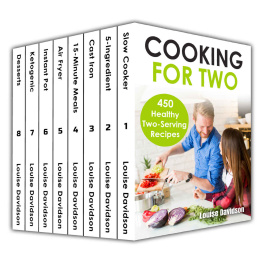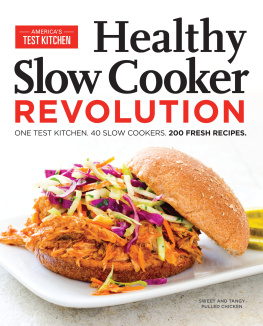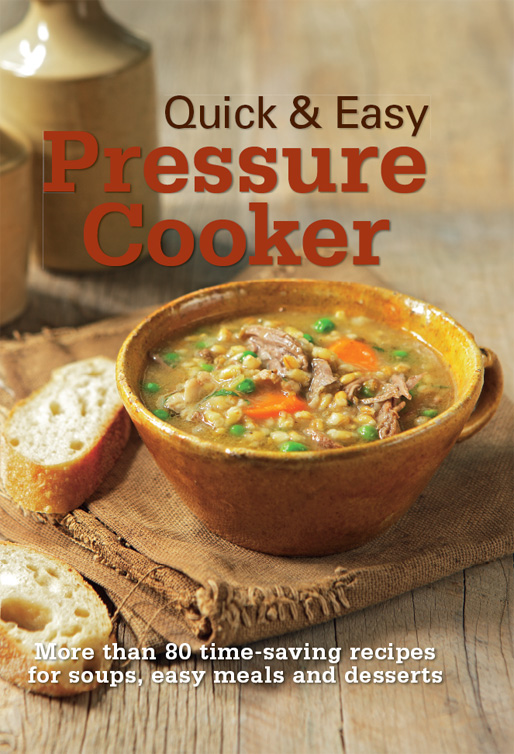Introduction
It wasnt until 1939 that the first commercially produced modern saucepan-style pressure cookers became available. They featured an easy-to-close interlocking cover, and manufacturers were soon finding it hard to keep up with the demand for them due to their revolutionary time-saving advantages. Since then, the pressure cooker industry has continued to develop and improve the many styles and features available to the home cook.
Even though pressure cookers have always enjoyed popularity in Europe and Asia, they have experienced a resurgence in recent times in countries such as Australia and the United States. And the reasons are good ones.
They are a great time saver: dishes that traditionally take hours to cook can be prepared in a pressure cooker in a fraction of the time, some up to 70 per cent faster.
Pressure cookers are cost-saving cheaper cuts of meat are most suited to pressure cooking, making it an economical way to cook.
Nutritionally, pressure cookers also get a tick the shorter cooking time needed means that generally more nutrients are retained, as well as flavour.
Pressure cookers are great energy savers: because of the shorter cooking time involved, less energy is required during the cooking process a great benefit in todays world.
How a pressure cooker works
Different models of pressure cookers can look quite different, and have different valves, regulators and locking systems, but they all work in a similar way.
Food is cooked using the pressure that is created by the steam trapped within it. Pressure cookers have a lid that can, when locked in place, completely seal the pot. When the liquid boils and creates steam, the steam is trapped in the pot, building up and increasing the pressure and, in turn, increasing the boiling point of the liquid, as well as the temperature within the cooker.
The pressure of the trapped steam is measured in psi (pound of force per square inch). Check your instruction manual for the cooking pressure of your particular cooker. Some pressure cookers have both low and high settings. Generally low will mean a psi of around 8, while high will mean a psi of 1215. A psi of 15 is the highest pressure a modern-day cooker will reach.
The higher the psi, the higher the pressure and temperature in the cooker, and the faster the food will cook. All our recipes specify either a low or high pressure setting when cooking. The pressure cookers used for testing the recipes in this book had a psi of 8 when set on low, and a psi of 15 when set on high.
In the past, pressure cookers have had a slightly infamous reputation for not being completely safe to use. Disasters involving the lid being forced off during cooking due to excess pressure building up, resulting in the contents of the pot being sprayed around the kitchen, are well known by many.
Thankfully, modern pressure cookers are much safer to use. They have a number of safety features, including inbuilt mechanisms that prevent the lid being removed before the pressure is completely released. They also have valves that will automatically release the pressure if it becomes too high.
Buying a pressure cooker
When it comes to size, pressure cookers generally range from around 4 litres (140 fl oz) to 10 litres (350 fl oz). A 4 litre (140 fl oz) cooker is ideal for singles or couples and smaller meals. The 6 litre (210 fl oz) cooker is a great size for most dishes serving 46 people. However, if you plan on braising lots of large cuts of meat or if you have a large family, consider an 8 litre (280 fl oz) or 10 litre (350 fl oz) cooker.
Consider the cooking pressure levels of the pressure cooker some only have one psi level, while others offer at least two. Having more than one pressure level will give you greater control and flexibility when cooking various foods.
When choosing a pressure cooker, consider that the most durable are made of stainless steel with a 3-ply aluminium sandwich base. Those with a heavy sandwich base are good for browning meats before you add the liquid; they cook more evenly and will be less likely to scorch and develop hot spots. It is also a good idea to choose a pressure cooker with heat-resistant handles.
Steaming baskets and trivets are good pressure cooker accessories, and many are sold with them. They are useful when steaming vegetables and cooking dishes that need to stay elevated above the water or sauce.
And remember, you get what you pay for as far as pressure control and ease of use goes.
Using your pressure cooker
Read your owners manual carefully before you use your pressure cooker for the first time, and follow all the recommendations.
As with all cooking appliances, you will have to get to know your pressure cooker for example, how quickly it cooks and how much liquid it needs. Note the results of the recipes you cook so you can adjust the cooking time and/or liquid content the next time if necessary.
In our recipes we have specified the size of the pressure cooker used. If using a different-sized cooker, you may need to alter the cooking time slightly.
Ingredients
Liquid is probably the most important ingredient when pressure cooking. As a general rule, your pressure cooker will need at least 250 ml (9 fl oz/1 cup) of liquid for the first 15 minutes of cooking, and an additional 150 ml (5 fl oz) for every extra 15 minutes (or part thereof) of cooking time. This is what all our recipes have been based on. However, pressure cookers do vary slightly and it is best to check your instruction manual to see if the manufacturer recommends a different amount.
More liquid can be added to these recipes, but never less just make sure you dont fill the pot more than two-thirds full with combined food and liquid. If adding more liquid, remember that the final consistency of the dish will be slightly wetter.
If you are cooking ingredients that absorb liquid and expand during cooking for example, grains such as rice and pearl barley, or dried pulses such as chickpeas, beans, lentils and split peas dont fill your cooker more than half full.
Never use creamy liquids such as milk, cream, coconut milk or coconut cream as the only liquid in the dish. Water or stock also needs to be added to dilute these ingredients, to reduce the risk of scorching during cooking.
Small amounts of yoghurt are fine to add to dishes before cooking under pressure, such as in a marinade, but generally yoghurt is best stirred through the dish at the end of cooking once the pressure has been released.
There are a few ingredients that dont cook well in a pressure cooker. These include pasta, dumplings and porridge. Dishes with flour also dont work well as they tend to scorch more easily. If using flour, only use it in small quantities, such as for dusting meats before browning them.
Generally, its a good idea to initially seal meats in a little oil until well browned before adding the liquid ingredients, as this helps develop a good flavour. For the same reason, vegetables used as a flavour base, such as onions, leeks and celery, as well as herbs and spices, are often best cooked in a little oil for a short while first.
Always prick foods with skins, such as sausages, before cooking. Also remember to cut an ingredient into similar-sized pieces so they will cook at the same rate.
Bringing the cooker up to pressure
If you have seared meat or other ingredients in the cooker, make sure you scrape up any bits clinging to the base of the pot. Adding a little wine, stock or water and simmering this for a short time while scraping the pot will help dislodge them. This will help prevent food scorching on the base of the cooker while pressure-cooking.







